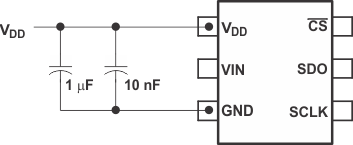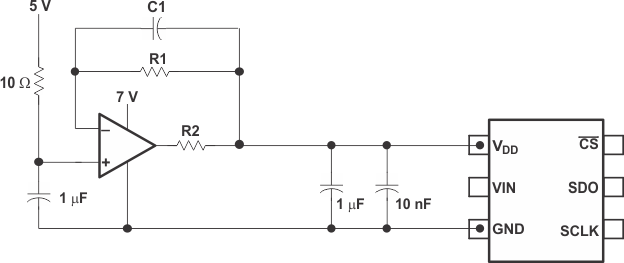JAJS220B September 2005 – August 2016 ADS7886
PRODUCTION DATA.
- 1 特長
- 2 アプリケーション
- 3 概要
- 4 改訂履歴
- 5 Device Comparison Table
- 6 Pin Configuration and Functions
- 7 Specifications
- 8 Detailed Description
- 9 Application and Implementation
- 10Power Supply Recommendations
- 11Layout
- 12デバイスおよびドキュメントのサポート
- 13メカニカル、パッケージ、および注文情報
パッケージ・オプション
メカニカル・データ(パッケージ|ピン)
サーマルパッド・メカニカル・データ
- DCK|6
発注情報
10 Power Supply Recommendations
The reference voltage for the ADS7886 A/D converter is derived from the supply voltage internally. The supply to ADS7886 should be driven with a low impedance source and should be decoupled to the ground. Decouple the VDD with 1-µF ceramic decoupling capacitors, as shown in Figure 32. Always set the VDD supply to be greater than or equal to the maximum input signal to avoid saturation of codes.
 Figure 32. Supply/Reference Decoupling Capacitors
Figure 32. Supply/Reference Decoupling Capacitors
 Figure 33. Using the REF3030 Reference
Figure 33. Using the REF3030 Reference
 Figure 34. Buffering With the OPA735
Figure 34. Buffering With the OPA735